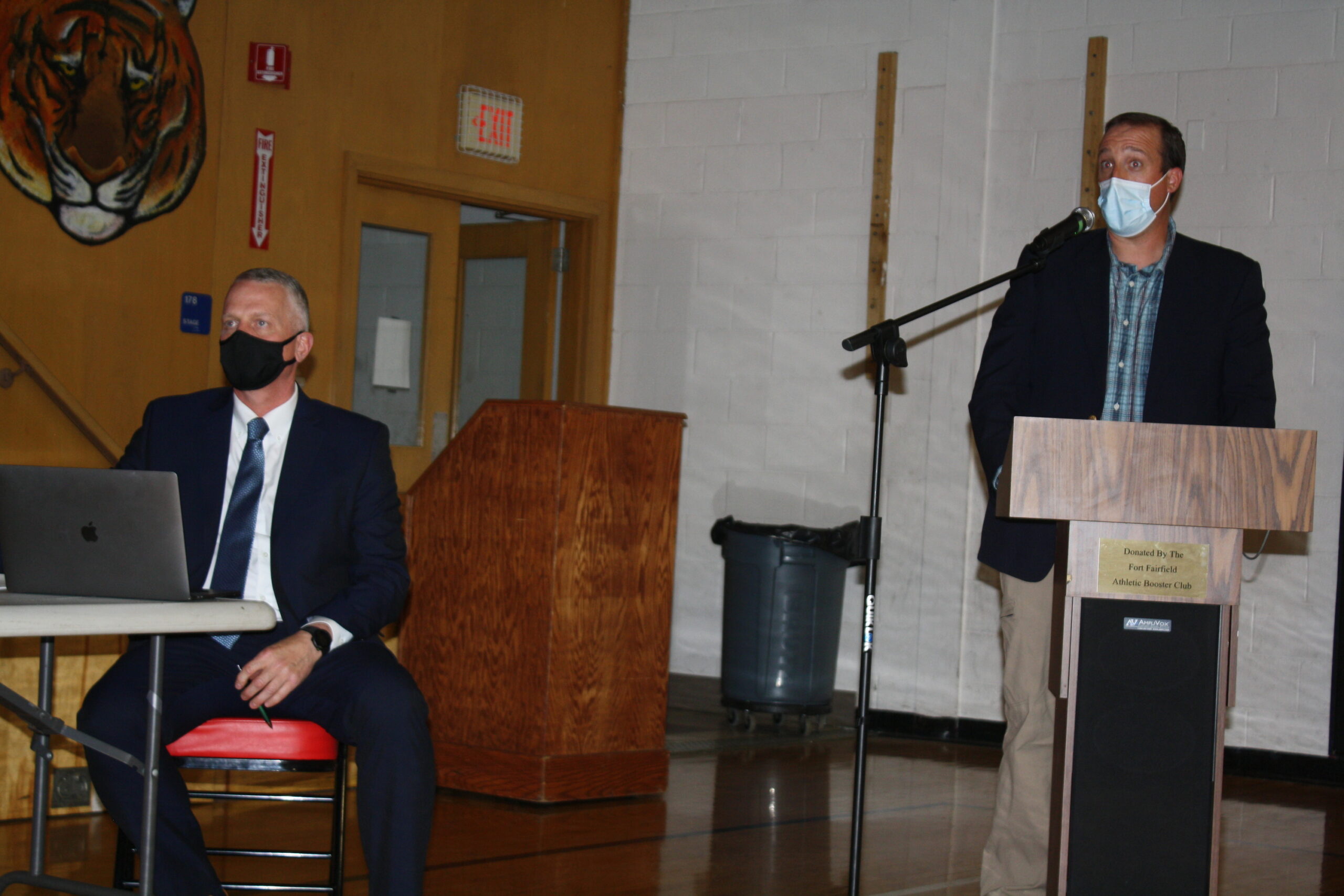
FORT FAIRFIELD, Maine — The SAD 20 school board and a small group of community members unanimously passed a budget Tuesday, May 18, that features no increase to local education-based taxes for the coming year.
About 14 community members gathered in the Fort Fairfield Middle/High School gymnasium as Superintendent Tim Doak presented the budget numbers to them and the school board. The budget totals $6.8 million, a 1.2 percent increase over the previous school year.
The increase is mainly due to increases in teachers’ salaries, but the total budget represents a $632,508 in reductions from the initial $7.5 million budget proposed in January. To decrease the costs for taxpayers, the school board moved $160,000 in capital improvement funds to the schools’ ESSER funds given for COVID-19 relief.
Other major budget cuts include: one full-time education technician position; the elimination of $19,000 for buses, which the school purchased through ESSER funds; and the transfer of funds for a full-time nurse, computer equipment and elementary school playground equipment from the budget to the ESSER grants.
SAD 20 received over $1.9 million in federal relief since the pandemic began and expects to receive a final round of ESSER funds, totaling $1.8 million, this summer.
Funds have been used to purchase technology and teaching supplies, personal protective equipment, three new buses, playground equipment, a new street sign for the high school, a new plow truck, rugs and floor tiles and to support additional school nurse positions.
Doak noted that the total budget represents a fiscally “conservative” approach by the district to do their part in decreasing local property taxes for residents.
“We wanted to use those [COVID] funds to pay for the largest expenses, so that taxpayers wouldn’t have to,” Doak said.
The official district budget now includes $40,000 in capital improvement funds that will pay for anticipated bathroom renovations, asbestos removal and a roof replacement for the high school.
State allocation for Essential Programs and Services totals $4.2 million, with the district expected to raise an additional $1.2 million.
The budget includes an article that allows the district to readjust the budget if the legislature passes Gov. Janet Mills’ proposed $8.8 billion budget, which would bring Maine’s share of public school funding to 55 percent.
According to Article 18, the district can use the additional state funds to “increase expenditures for school purposes,” set up a reserve account and/or decrease the mill rate for local taxpayers. The district has chosen to reduce the mill rate.
If the state budget passes, SAD 20 will see its portion of the local mill rate go from the current 7.90 to 7.26. The district intends to place the additional funds in a reserve account in order to prevent a mill rate increase.
“That [mill rate] will be the lowest one I’ve seen in my time here,” said Doak, who has been with SAD 20 for five years. “[The additional state funding] will give $209,609 back to local taxpayers.”







